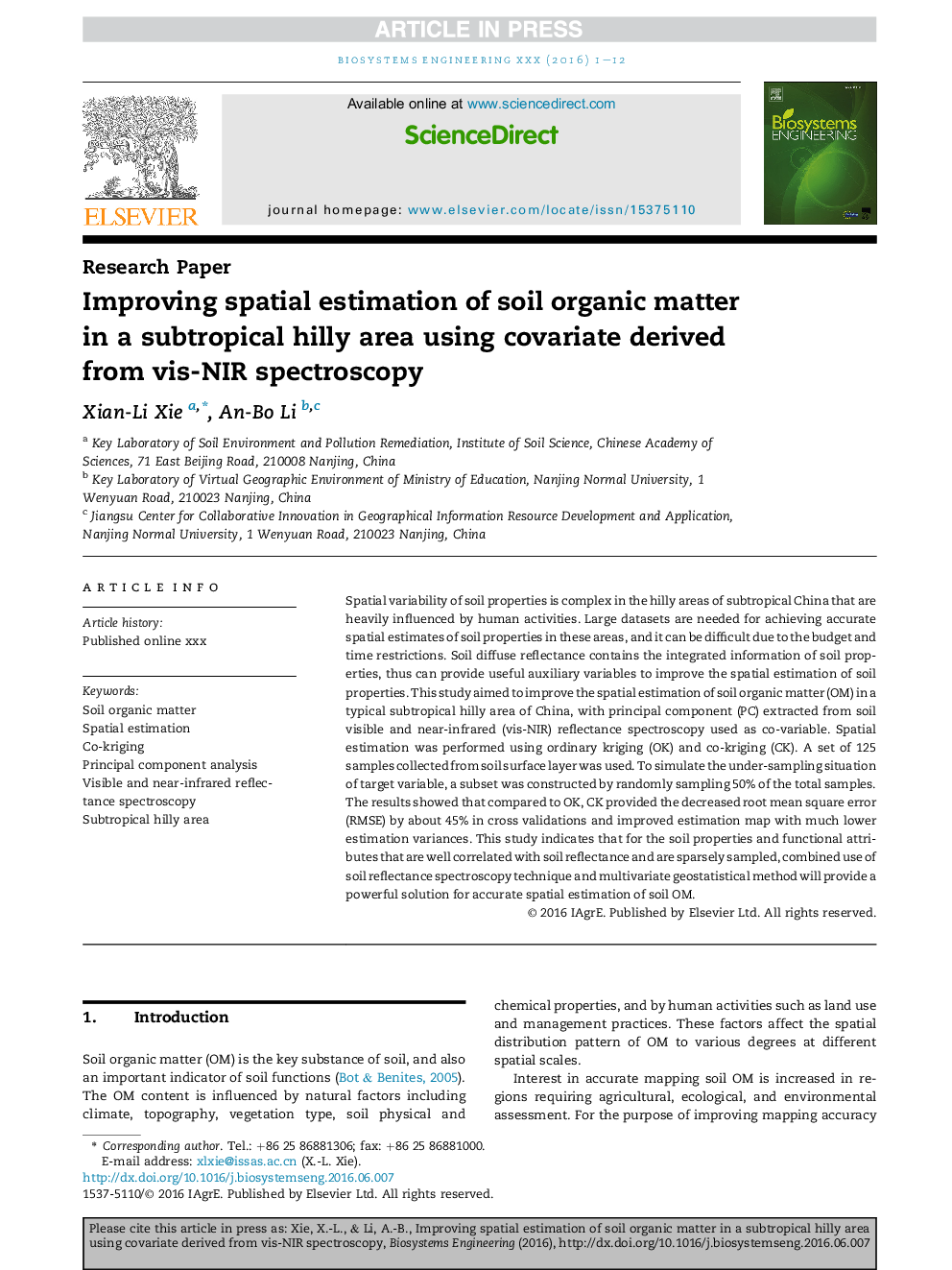| Article ID | Journal | Published Year | Pages | File Type |
|---|---|---|---|---|
| 5471967 | Biosystems Engineering | 2016 | 12 Pages |
Abstract
Spatial variability of soil properties is complex in the hilly areas of subtropical China that are heavily influenced by human activities. Large datasets are needed for achieving accurate spatial estimates of soil properties in these areas, and it can be difficult due to the budget and time restrictions. Soil diffuse reflectance contains the integrated information of soil properties, thus can provide useful auxiliary variables to improve the spatial estimation of soil properties. This study aimed to improve the spatial estimation of soil organic matter (OM) in a typical subtropical hilly area of China, with principal component (PC) extracted from soil visible and near-infrared (vis-NIR) reflectance spectroscopy used as co-variable. Spatial estimation was performed using ordinary kriging (OK) and co-kriging (CK). A set of 125 samples collected from soil surface layer was used. To simulate the under-sampling situation of target variable, a subset was constructed by randomly sampling 50% of the total samples. The results showed that compared to OK, CK provided the decreased root mean square error (RMSE) by about 45% in cross validations and improved estimation map with much lower estimation variances. This study indicates that for the soil properties and functional attributes that are well correlated with soil reflectance and are sparsely sampled, combined use of soil reflectance spectroscopy technique and multivariate geostatistical method will provide a powerful solution for accurate spatial estimation of soil OM.
Related Topics
Physical Sciences and Engineering
Engineering
Control and Systems Engineering
Authors
Xian-Li Xie, An-Bo Li,
